ASUS F2A85-V Pro Review: A Look at FM2 with A85X
by Ian Cutress on October 10, 2012 11:20 AM EST- Posted in
- Motherboards
- Asus
- Trinity
- FM2
- A85X
ASUS F2A85-V Pro Software
The software package provided by ASUS is often cited by us as one of the best software packages with a motherboard, and this is still true on the FM2 socket and Trinity processors. The install CD is the same platform used by ASUS on their Intel products, with one menu for software and another for utilities. Each of these menus allows for a one-click ‘Install-All’ option, and clicking through allows users to deselect certain options that may not be relevant to them.
Within the software package, Daemon Tools Pro was installed by default. I have used Daemon Tools for years – it is a great piece of software for mounting disk images.
The main software package revolves around ASUS’ AI Suite. This software acts as an interface for the smaller additional programs that ASUS create for use on the motherboard.
ASUS AI Suite
The main bar of AI Suite splits the sub-programs up into groups, with two of the major utilities having their own buttons. In the case with the F2A85-V Pro this is the Auto Tuning option for overclocking and the Remote Go utility for media and file organization over network connections to tablets and smartphones. We will go through these in turn.
TurboV Evo
TurboV Evo is the operating system based overclocking tool provided. It allows for changes of all the important voltages and frequencies onboard, as well as providing the Auto Tuning options for ‘Fast’ and ‘Extreme’ overclock settings. I usually find TurboV Evo a good bit of kit when overclock testing, though I would like to put in some values by numbers rather than having to fiddle with sliders all the time.
DIGI+ Power Control
In order to give users better control over the power delivery, ASUS implements their DIGI+ Power Control on the FM2 boards as well. There are fewer options here than on some of their higher end Intel board offerings, but if a user wants to give more current capabilities or adjust load line calibrations through the OS for overclocks, the options are here for both the CPU/APU and the DRAM.
In a similar vein, we also have the EPU (Energy Processing Unit) menu and settings, designed to adjust and power gate different parts of the motherboard to save energy.
Fan Xpert 2
ASUS are well known in the motherboard space for using better fan controllers that the rest of the motherboard industry – typically one per fan header which is configurable within the BIOS and in software. The beauty of these fan headers lie in their independent control – the system has access to the RPM output and can adjust the speed on the fly. Pair that up with some software that actually can manipulate such a system and we have a nice fan configuration. The software behind this is Fan Xpert 2 – bundled as part of AI Suite, it will test all the fans in the system and provide RPM vs. Power applied graphs (as this relationship is rarely linear). This allows users to adjust the temperature/RPM curves as required – the only thing missing is the ability to apply hysteresis.
USB 3.0 Boost
As part of the ASUS methodology, we have onboard an ASMedia controller which can take advantage of the most up to date USB 3.0 transfer protocols. By attaching a compatible USB 3.0 device, and a click of the USB 3.0 Boost interface, the software will apply a driver over the standard ASMedia driver in order to enforce these under the hood commands. As we have shown in previous reviews, this affords a nice bump in the speeds provided at low transfer size workloads, making a USB device more tenable for everyday random access use rather than just storage. USB 3.0 Boost can also apply a modified driver to the chipset USB 3.0 ports for a similar boost using BOT protocols rather than UASP. (Note, this should become moot for Windows 8, where UASP will be a part of the standard driver package.)
Network iControl
For the past couple of years it has been clear that users in the motherboard industry would prefer the ability to manipulate the network ports onboard their system. While doing some epic downloading while playing a twitch FPS online is a little bit of an odd combination, using software tools in the OS to manage the priority of these programs is never a bad thing. On the ASUS side this comes in the form of Network iControl, and within this software the user can adjust the software that uses the Ethernet connections and rank them in order of priority. Alternatively the system can be left on automatic, and the program will use a series of pre-defined rules to prioritize a lot of the well known programs that typically rely on low-latency throughput.
Elsewhere in AI Suite we have advanced charging software in the form of AI Charger+ and USB Charger which will manipulate the current output of specific USB ports if the appropriate device is connected. This will help greatly with charging devices, using up to 1.5A rather than 300mA. I have been asked to test this feature in future reviews, and when I have an accurate setup I will start to test these charging features. Specifically AI Charger+ is for Apple products, and USB Charger is for other devices (Kindles, smartphones et al.).
ASUS also use their USB BIOS Flashback software here, allowing users to update the BIOS without having a CPU, Memory or VGA connected. This is a feature that helps protect the product in case new CPUs are released and microcode updates are needed. If a user buys a board that is not compatible with their processor, in the past an older processor had to be found in order to update the BIOS. This is no longer the case with USB BIOS Flashback.


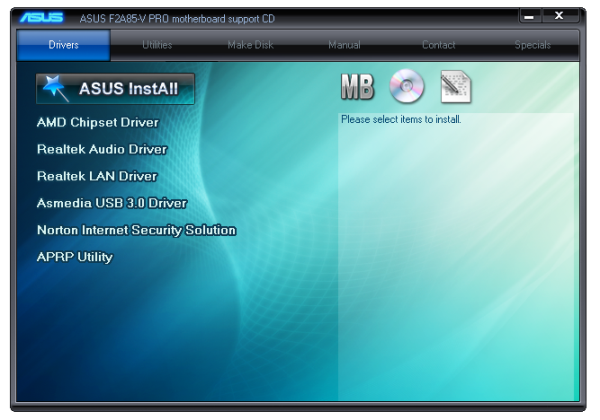
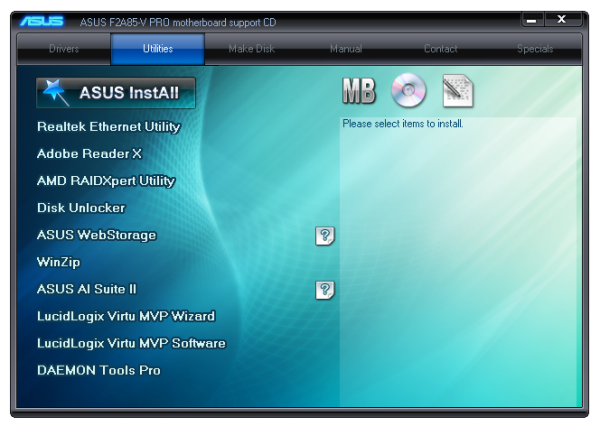

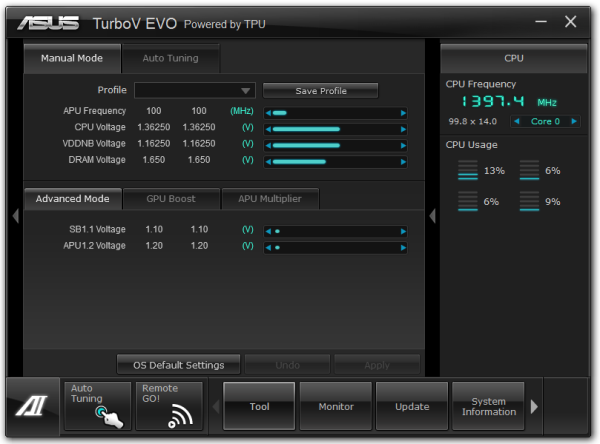
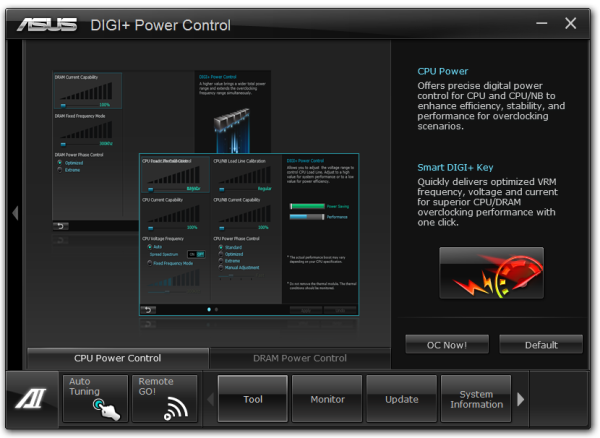
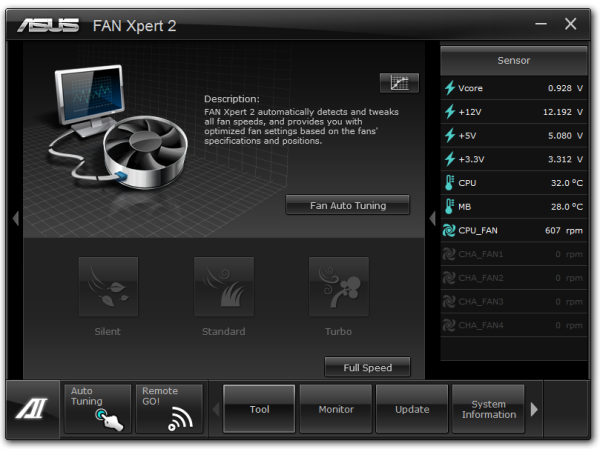
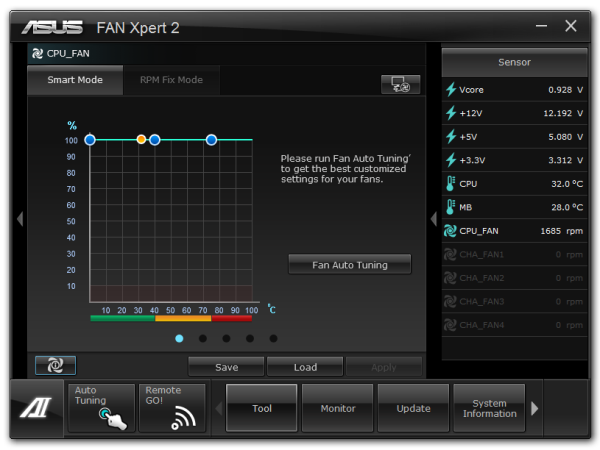
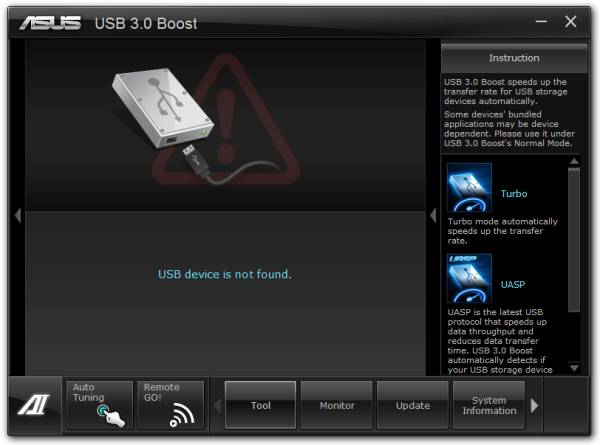














66 Comments
View All Comments
zappb - Sunday, November 4, 2012 - link
I just build 3 of these office machines (prices in euros before VAT / sales tax)AMD A6-5400K - 50
Asrock FM2A75M - DGS - 45
Fractal Core 1000 - 30
Intel 330 120 GB ssd - 75
Mushkin 4GB ddr3 -1600- 13
Be quiet pure power L7 300w - 32
Win8 pro oem (w/Start8)a 110
Office 2010 pro 100
Hardware comes to €245, and if I could have sourced the A4-5300, would have knocked another 15 off that. Amd will be pricing the entry level FM2 stuff really agressively in Jan 2013 onwards, so you could probably pick up the A4-5300 for 30 euro.
,
WEI scores are: Processor: 6.3, Memory: 5.9, Graphics: 4.7, Gaming Graphics: 6.3, primary hard disk, 8.1.
Will test power consumption shortly, but just seeing the load on the CPU with excel, word, and chrome with 5 browser windows open, it hovers around 1- 4%, so meaning for these light usage cases, it might be cheaper to run than the intel options (that would be a real turn up for the books).
crimson117 - Wednesday, October 10, 2012 - link
I'm having trouble parsing this sentence...> From my perspective, a storage system the RAID 5 that the A85X chipset supports across the eight SATA 6 Gbps ports is golden where Trinity is concerned.
KineticHummus - Thursday, October 11, 2012 - link
it means using trinity in a storage system/home server is great because it natively supports raid 5 across all 8 sata3 ports, which intel can not do.Anonymous Blowhard - Thursday, October 11, 2012 - link
Except that anyone running an 8-drive RAID5 with large, slow, consumer off the shelf SATA drives is either uninformed or a moron.Odds on getting an unrecoverable read error with large (1TB+) drives during a RAID5 rebuild are incredibly high; that's why enterprise SANs are using things like 450GB/600GB SAS drives now, and those have a failure rate an order of magnitude lower than consumer grade SATA.
Home servers should be using RAID1, 10, Z, Z2 - or just none at all. Whatever you use, doing proper backups (which RAID is not) is critical if you care about your data. DVDs I've ripped? I can get those again. Pictures of my son's first birthday? Backed up in triplicate, multiple offsite, and cloud stored.
http://www.zdnet.com/blog/storage/why-raid-5-stops...
ven1ger - Thursday, October 11, 2012 - link
First of if you're calling someone a moron, maybe you should look in the mirror.The article that you linked was written back in 2007, and if you read some of the comments, many of the comments thought it was much ado about nothing.
Maybe you should check out what current cloud based backup companies look like, here's an example that I was just reading about a couple of days ago.
http://blog.backblaze.com/
Very interesting story, commercial cloud based storage company that uses consumer SATA drives. They even have open-sourced hardware design(s) available for their PODs that anyone can use to create their own muti-drive backup system, and which several others have created, if you are so inclined that way.
I am no way involved with Backblaze, just was an interesting story piece that I ran across and their tale of harvesting consumer grade 3TB SATA drives in the aftermath of the Thailand flooding.
Anonymous Blowhard - Thursday, October 11, 2012 - link
Ad hominem ignored.The article was correct then and even more now. As data density has increased, reliability has not kept pace.
Using BackBlaze, or most any "cloud backup provider" as a reference for pro-RAID-5 is a bad idea. Cloud storage providers create their redundancy at the system level. Reliability, availability, and operational efficiencies are all hugely increased by treating the entire system as an FRU. It's cheaper for them to just wait for there to be enough downed pods to justify "Okay, let's roll into the DC, pull out a dozen systems, and slap in new ones." They don't have the time or concern to troubleshoot individual drive failures.
(Also, BackBlaze uses RAID-6.)
So again, if you're using RAID-5 with big, slow, error-prone drives; please stop doing that if you care about your data.
Memristor - Wednesday, October 10, 2012 - link
What version of the AHCI, RAID and USB 3.0 BIOS is on this new board? It would be very helpful if you could include the version of these BIOS's in your board reviews. Since it is very easy to updated the firmware of these components outside of a regular motherboard BIOS update it can be very helpful to increase performance and other issues that arise especially with RAID configurations and newer SSD drives.djshortsleeve - Wednesday, October 10, 2012 - link
Ian, glad you mentioned hysteresis. I dont understand why they dont incorporate this control? Its fairly simple as long as a target temperature is defined.goinginstyle - Wednesday, October 10, 2012 - link
"This could be an error on the part of OCCT.." If you do not know what the problem is then why mention it in the review as a performance concern. Either OCCT is updated to work with Trinity or more than likely it is not but find out before you state it. As to DPC latency, is it really a EFI problem or a platform problem as Llano is not much better.Hardcore69 - Wednesday, October 10, 2012 - link
Why bother? An Ivy Bridge i3 is 55w and is close to the equivalent except for the GPU, less than a fart's difference CPU wise. Compared to a hot 100w CPU, if you don't game, this isn't worth bothering with. At all for a standard office box. As for the mobo, I'd prefer a gruntier CPU than fancy useless heatpipes.